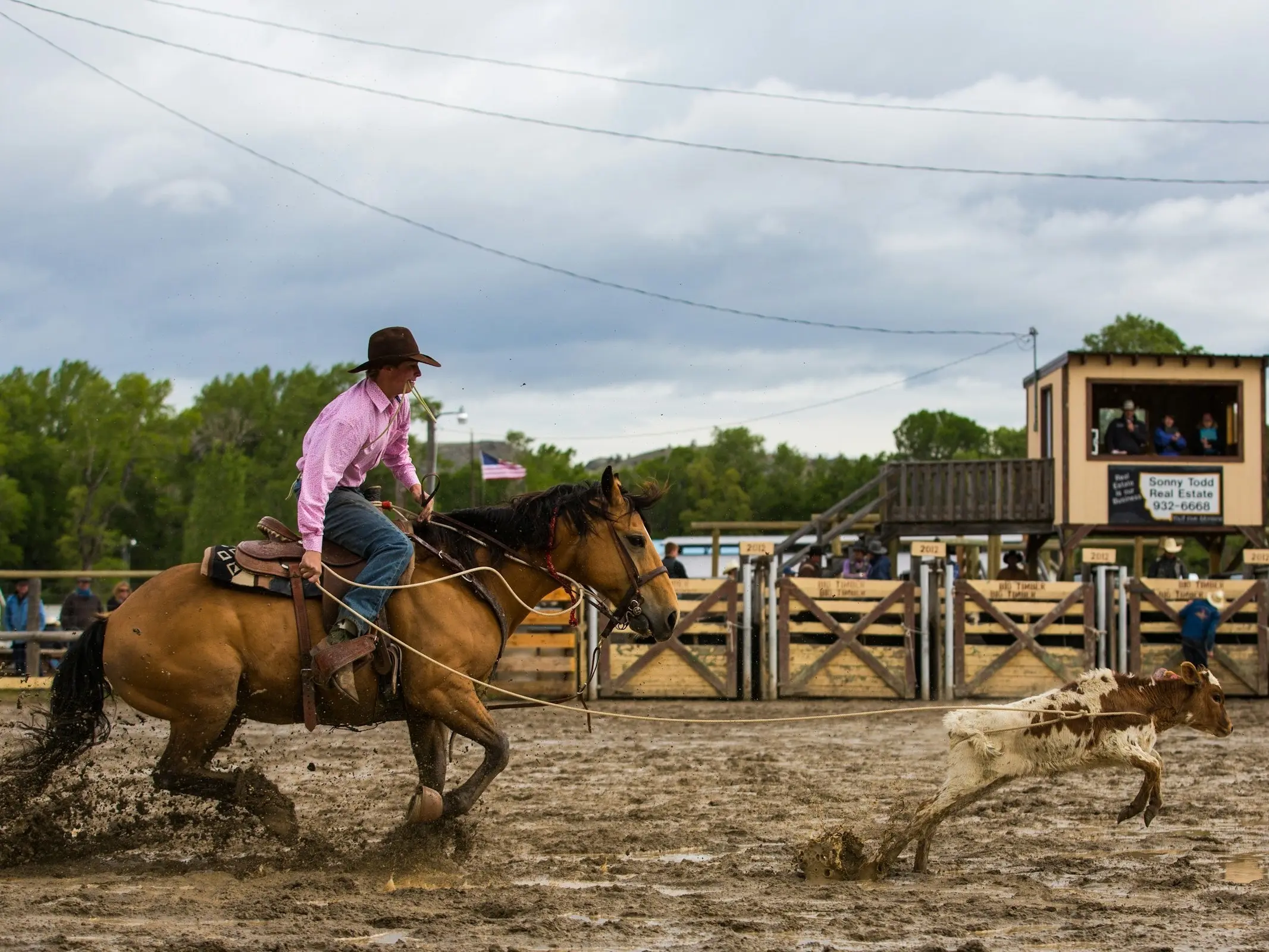
Bridle Catch
A catch where the rope hangs in the steers mouth.
Breaking the Barrier
Breaking the rope or electronic eye barrier before being released. This adds a 10 second penalty on the contestant’s time.
Read more

Bridle Catch
A catch where the rope hangs in the steers mouth.
Breaking the Barrier
Breaking the rope or electronic eye barrier before being released. This adds a 10 second penalty on the contestant’s time.
Read more
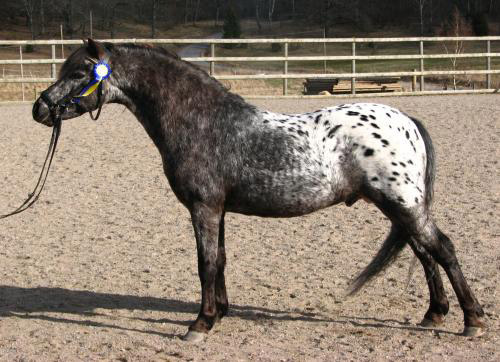
The blood of the American Miniature Horse comes from England & the Netherlands where they were used as mine horses. Their ancestors were brought to North America in the 19th century for use in the Appalachian coal mines.
The original miniature horse bloodlines come mainly from Shetland & Dartmoor ponies. However, once brought to the states, there was an attempt to refine them with Hackney, POA and Thoroughbred genetics.
Read more
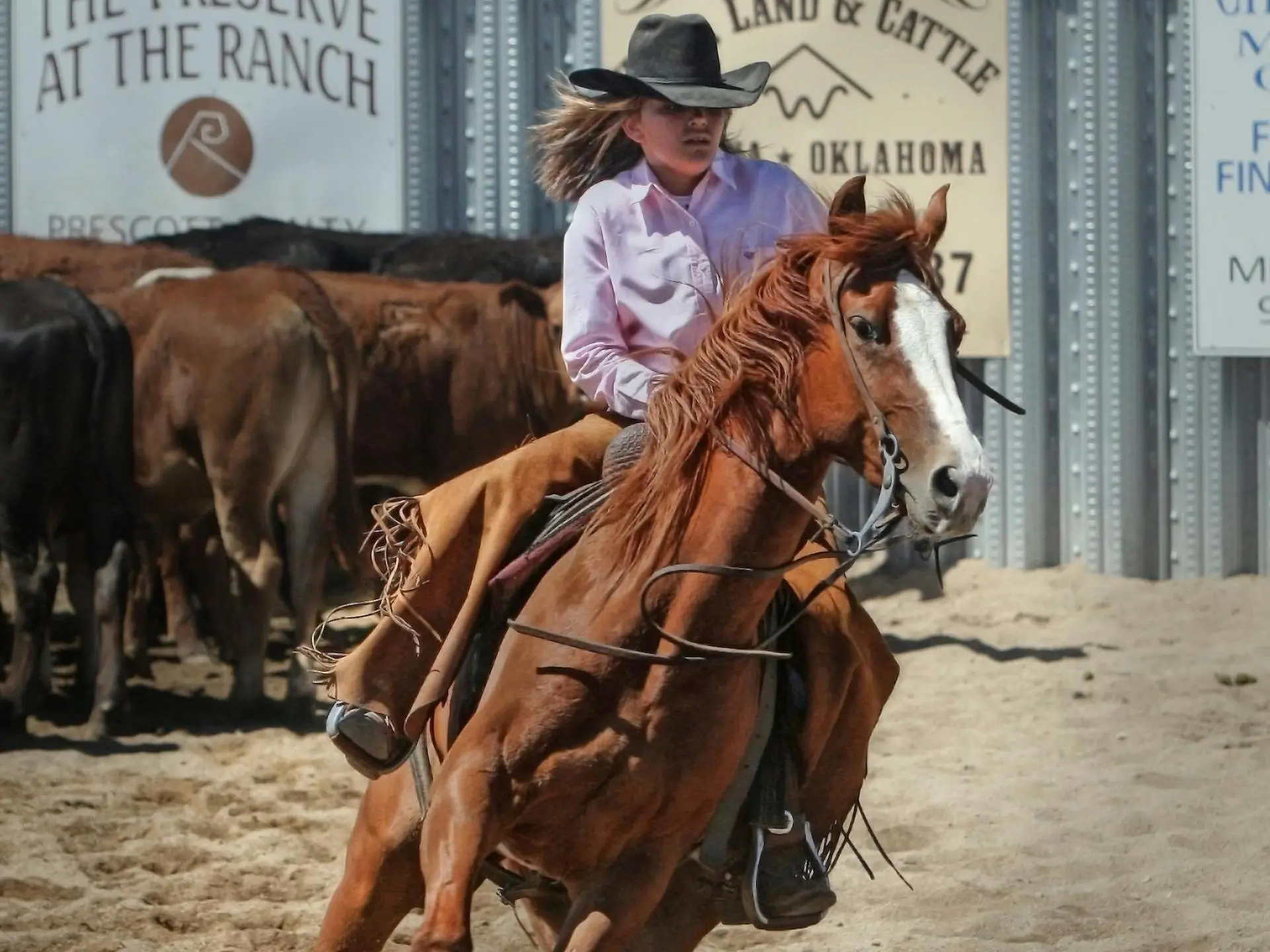
Adjusted Monitor System
Should there be a discrepancy, the judges will review video footage to determine if the score should be adjusted.
Read more
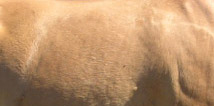 Recently I received a comment from Juli over at HorseNet Horse Rescue asking for help determining the color of one of their rescues.
Recently I received a comment from Juli over at HorseNet Horse Rescue asking for help determining the color of one of their rescues.
So I told her I’d post pictures of him to see if any of my readers could help her pinpoint Comanchee’s coloring.
I realize that color genetics isn’t always as it appears but thought it was worth a try. Here are a couple images of Comanchee and one more can be found on their website (scroll down and he’s the first one under the Non-Ridable animals header).
Read more

The American Indian Horse is known by many names, including Indian Pony, Cayuse, Buffalo Horse and Cow Pony.
The ancestors of these animals were brought to the US by the Spanish during their colonization of the west. The Spanish were smart horsemen and only brought their strongest mounts on the journey west. Thus the strongest animals of the strongest Spanish strains were the ones that made it across.
Read more
The American Drum Horse is a relatively new breed, however their lineage is part of what makes them so special.
Drum horses were originally used by the Queen of England as part of her ceremonial band. They had to be sturdy and calm enough to carry a rider with large kettle drums through large crowds of people.
Read more
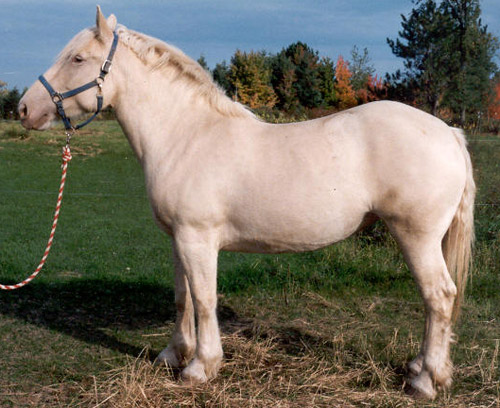
The American Cream Draft Horse has the honor of being the only draft breed native to the US. The roots of this breed only date back to 1905 and come from the bloodlines of a foundation mare in Iowa named Old Granny.
Read more
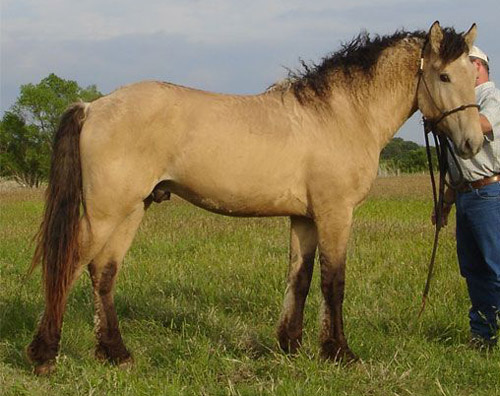
Perhaps most well known for their lovely long, curly coat of hair, the American Bashkir horse is a breed shrouded in the unknown. The existance of a horse with the *curly* gene in North America is a mystery.
Their bloodlines are clearly the same as the Bashkir horse native to the Ural mountains. Animals with curly coats were discovered in America in the early 19th century.
Read more

The American Albino horse is also called the American Cream & White and are not actually albino animals. The albino gene is fatal to horses and rarely survives beyond the womb.
Read more
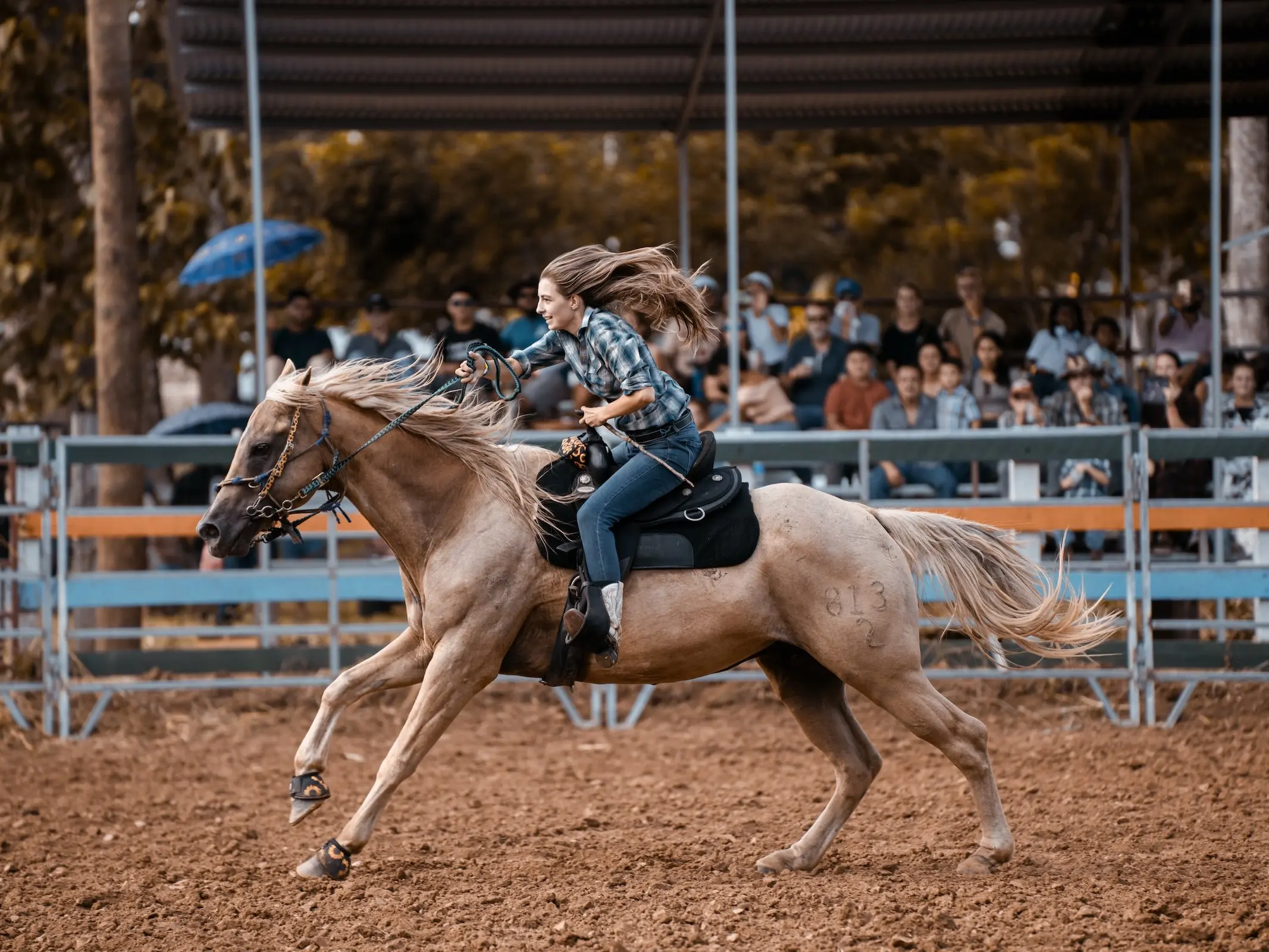
Circle
A maneuver which requires loping in a circle over half of the arena. There are two types of circles: Small, Slow & Large, Fast. Each circle element should show two transitions, one from fast to slow or slow to fast and one flying lead change.
Degree of difficulty
Judges score maneuvers based on their degree of difficulty. Higher scores are given for a higher degree of difficulty.
Drag
Tilling the arena soil periodically to keep the show area even.
Draw
Used to create a random list of competitors for their turn in the class.
Fencing
A warm up exercise where the horse runs from one end of the area to the other, as the rider controls building speed. At the far end the horse does a sliding stop right at the fence.
Markers
Labels (often orange cones) that divide the arena into thirds and indicate where the rider is expected to perform each maneuver.
Minus Maneuver
A maneuver with a low degree of difficulty.
No Score
When a horse is pulled from a competition due to illegal equipment or drugs their score is pulled and a record of the violation is filed.
NRHA
National Reining Horse Association was founded in 1966 to promote the reining horse. The association sets standards for the sport of reining worldwide.
Plus Maneuver
A maneuver with a high degree of difficulty
Roll Back
The completion of a stopping maneuver, after stopping the rider should pause and then ask the horse to rotate (or roll back) on their haunches and lope off in the direction they just came from.
Run Down
A maneuver which the horse builds up speed preparing for the stopping maneuver. The run down is important in ensuring a proper stop.
Skid Boots
Protective leg wear that wraps around the fetlock joint of the hind legs to protect them from injury.
Stop
A maneuver that is performed from a gallop, as they hit the proper marker their rider will ask them to slide to a stop leaning back on their hind legs. The faster and harder the stop, the higher the degree of difficulty.
Turn Around
A maneuver in which the horse pivots around their inside back foot in a circle approx. 4 times in both directions.
Willfully Guided
Terminology used to describe a horse with a pleasant manner, quiet mouth & tail, ears alert to their rider, relaxed & attentive posture.
Zero Score
When a rider goes off pattern they receive a zero score. It is not a penalty, but rather omits that rider from the score for that particular class.
For more information about the world of reining.
National Reining Horse Association
Reiner Stuff
Reiners World
Please feel free to comment about what we might have missed in the reining category & stay tuned for more to come. Be sure to check out more terminology from the horse world.
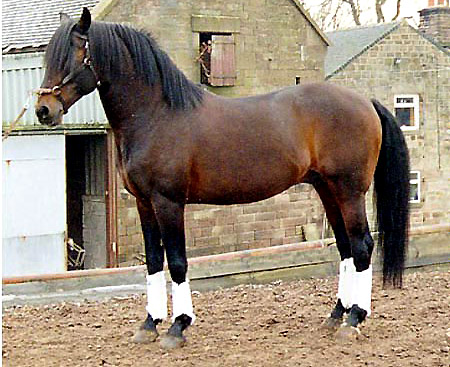
The Alter Real breed is also called the Royal Breed of Alter and comes from a small town in Portugal called Alter do Chao. These animals display many characteristics of the classic Iberian horse.
Read more
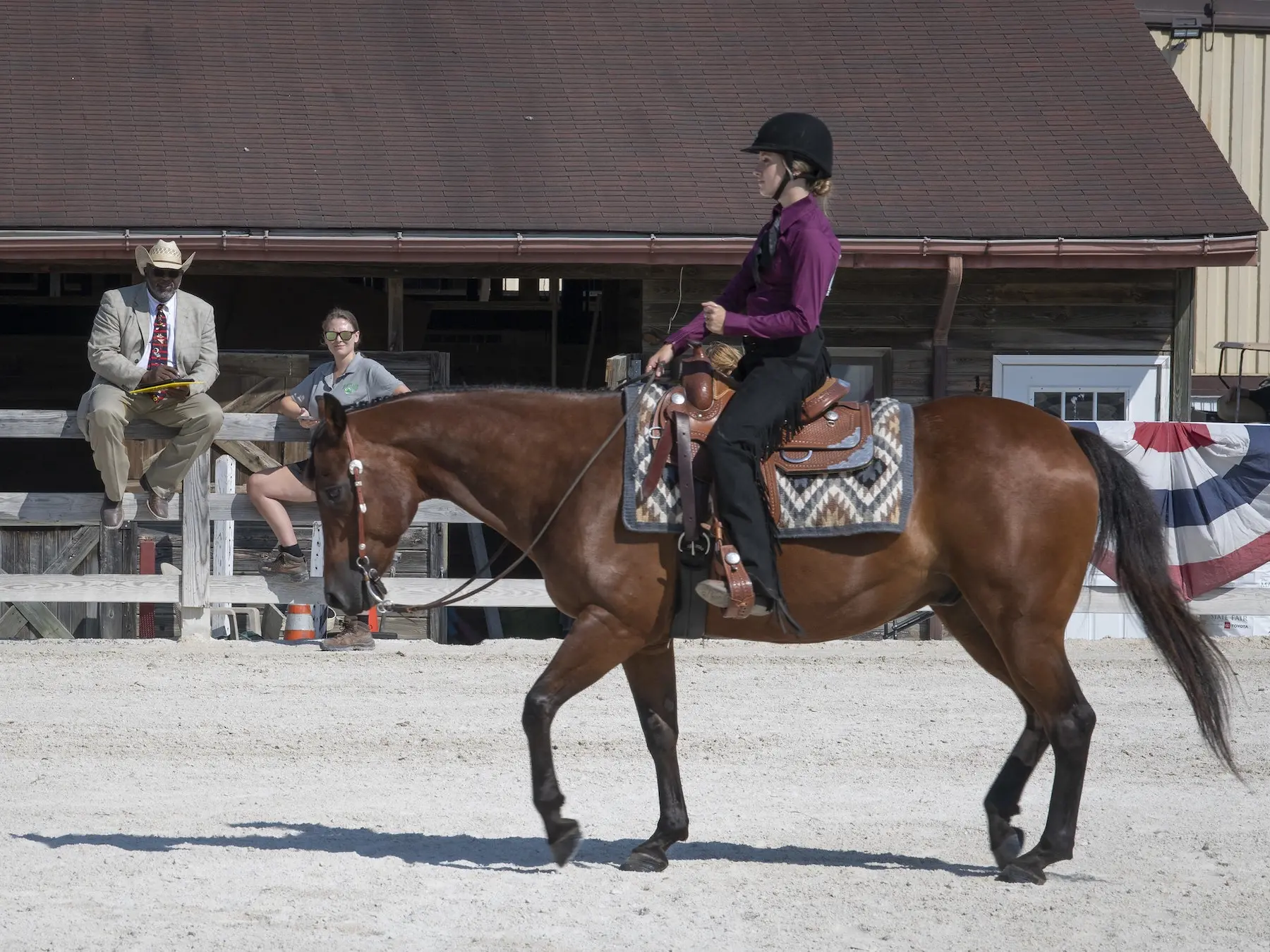
Back
Backing must be done quickly, in a perfectly straight line and with no hesitation.
Back Cinch
A second girth on the western saddle used to keep the saddle from tipping during quick maneuvers.
Flying Change
When a horse changes their lead with both front and hind legs in mid-stride.
Head Set
Refers to the height and angle of the horses head while in motion.
Jog
A slow trot that has a two-beat gait as diagonal legs hit the ground at simultaneously.
Lope
A slow canter that has a three-beat gait and can have a right or a left lead.
Neck Rein
Turning a horse by applying pressure from the reins on one side of the neck or the other.
Stock Seat
A generic term used to describe most disciplines of western riding.
Tom Thumb
A Pelham bit used on western bridles.
Tie down
Used to control the position of the horses head while riding. (Also called martingale)
Western
A style of riding characterized by a larger saddle with a pommel and a horn.
Best-Fit
A class which judges how well a horse has been cleaned up for the show.
Cutting
A class in which the horse and rider cut (or separate) one cow from a heard. Scoring is based on the teams ability to anticipate cow movements and keep them away from the herd.
Halter
A class which judges the animal by their confirmation & movement based on official breed standards.
Horsemanship
A class which judges the rider on their seat, position and poise as they complete a predetermined pattern.
Pleasure
A class which is judged on the horse as they go through their gaits on the rail. Horses are judged on their manners, disposition and smoothness of gaits.
Reining
A class which puts horse and rider through a series of patterns designed to mimic a herding horse at work. Scoring is based on the perfection of each movement.
Roping
A class in which horse and rider jump after a released cow on cue, chase the cow, rope it and bring it to the floor. Scoring is based on maneuvering and time.
Showmanship
A class which judges the handlers ability to show their horse in-hand.
Trail
A class which puts horse and rider through a series of obstacles designed to test agility, manners and teamwork.
This is just the beginning, the rabbit hole of western horse show terminology goes much deeper. We’ve sub-dividing categories like crazy & learned a lot in the process.Please feel free to comment anything we’ve missed in the basics & check out some more terminology.